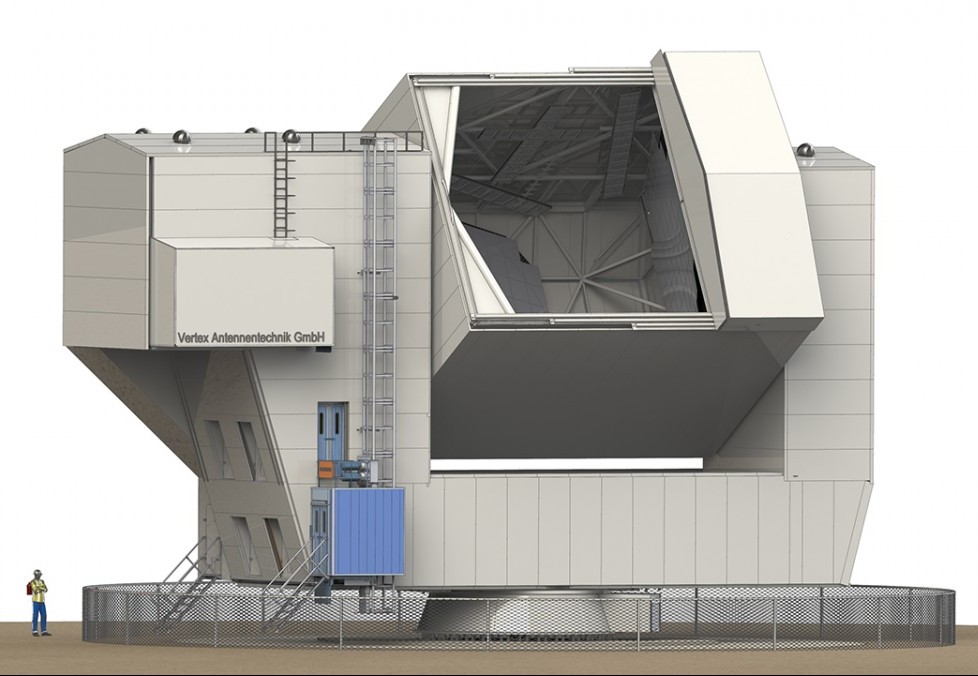CCAT-prime / FYST

The "Fred Young Submillimeter Telescope" (FYST, speak "feast") is a 6-m aperture submillimeter (submm) to millimeter (mm) wavelegth telescope under construction at 5600 m elevation near the summit of Cerro Chajnantor in northern Chile. FYST is the telescope of the CCAT-primt project. It is being built by CPI Vertex Antennentechnik GmbH in Duisburg and is expected to be operational by the end of 2024.
Together with the Cologne group of Prof. Dominik Riechers (Nachfolge Prof. Stutzki) and the group of Prof. Eiichiro Komatsu from the MPA in Garching, we are ~25% partner in CCAT-prime. Other partners are Cornell University (~60% share), and a consortium of Canadian universities. For more information, please the CCAT-prime webpage
Telescope and Science
The telescope optics are based on the off-axis crossed-Dragone design, which yields an extraordinarily wide field of view (FoV) for astrophysical applications. FYST will have a very high surface accuracy and a telescope emissivity less than one percent, which provides excellent surface brightness sensitivity in the 0.2 to 2 mm wavelength atmospheric windows. With its wide FoV, FYST will have unrivalled mapping speed, enabling novel science:
- Through intensity mapping over tens of square degrees in spectral lines such as the redshifted 158 micron [CII] line, FYST will reveal the formation, growth, and 3-D large-scale clustering properties of the first star forming galaxies from redshift 9.3 (in the epoch of reionization) to 3.3 (near the epoch of peak star formation), and those at lower redshifts in CO rotational lines.
- Through multi-frequency measurements in the 100 to 860 GHz band of the Sunyaev-Zeldovich (SZ) effect for more than 1000 galaxy clusters, FYST will measure the physical properties and spatial distribution of such clusters, placing constraints on fundamental physics, including the nature of dark energy and the sum of the neutrino masses, and revealing the effects of active galactic nuclei-star formation feedback in clusters.
- Through the multi-frequency characterization of the foreground dust polarization, FYST will greatly improve constraints on primordial gravitational waves and inflationary models obtained through CMB polarization measurements.
- Through multi-frequency photometric measurements of dusty sources of emission, FYST will trace the history of dusty star formation deep into the early epoch of galaxy formation.
- Through high frequency, spectrally resolved [CI] and CO line mapping, FYST will reveal the physical processes associated with star formation in various environments in the Milky Way, the Magellanic Clouds, and other nearby galaxies. We will also detect the flickering light of accretion disks enveloping protostellar envelopes through changes in their submm continuum brightness.
A more detailed description of the FYST science case using the Prim-CAM instrument, please look at our recent publication, CCAT-prime Collaboration: Science Goals and Forecasts wit Prime-Cam on the Fred Young Submillimeter Telescope.